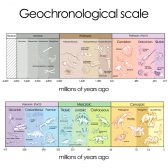Definition
noun
A biogeographic realm that covers Trans-Saharan Africa and Arabia
Supplement
Biogeographic realms are large spatial regions of the Earth’s land surface. Studying biogeographic realms leads to insight especially on biodiversity. It provides understanding on the extent of biodiversity and the factors that affect it. At present, there are about eight realms recognized by the World Wildlife Fund and they are divided according to their ecosystems sharing similar biological evolutionary history and distributional patterns of terrestrial organisms. The eight biogeographic realms are Nearctic realm, Palaearctic realm, Neotropical realm, Afrotropic realm, Indomalayan realm, Australasia realm, Oceanian realm, and Antarctic realm.
The Afrotropic realm is a biogeographic realm that has an area of about 22.1 million square kilometres. It includes Trans-Saharan Africa and Arabia. One of the major ecological regions included in Aftrotropic is the forest zone, which is a belt of lowland tropical moist broadleaf forests that run across most of equatorial Africa’s intertropical convergence zone.1 It also includes the Atlanctic and Sahara deserts in northern Africa and the Arabian desert of the Arabian Peninsula. Another major ecological region found here includes the East African grasslands and savannas, particularly Acacia-Commiphora grasslands and Serengeti.
The Afrotropic realm is formerly called the Ethiopian zone or region.
See also:
Reference(s):
1 Afrotropical realm. Retrieved from ://en.wikipedia.org/wiki/Afrotropical-realm.







